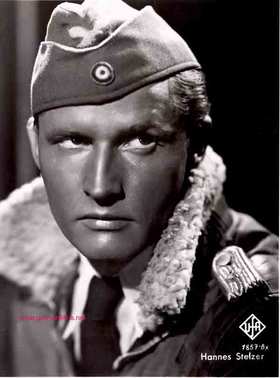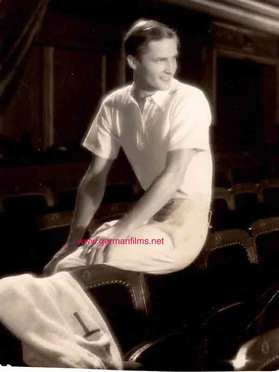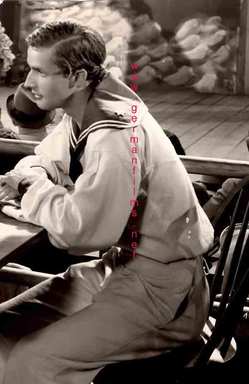- Home
- POSTER GALLERY
- ❗️BOOK & POSTER STORE❗️
- About the Posters
- The William Gillespie Collection
- Our Publishing House
- ❗️GFDN interviews author and collector William Gillespie ❗️
- Our most expensive & inexpensive finds!
- ❗️***NEW!*** Poster of the Month ❗️
- ❗️NEW ❗️Film Posters – Demands on an important means of film advertising. ❗️
- In our Book + Zeitschrift Library
- ❗️ ***NEW!*** Hitler Youth Quex – A Guide for the English–speaking Reader ***NEW!*** ❗️
- ❗️***NEW!*** Table of Contents of our new HJ QUEX book❗️
- ❗️Hitler Youth Quex Guide - early praise! ❗️
- Recent loans from the Collection
- Farewell Horst Claus. (1940–2024)
- "Der Deutsche Film" Zeitschrift
- ❗️ ***NEW!***German "Tendency" Films (Tendenzfilme) in the Third Reich ❗️
- KARL RITTER
- Karl Ritter original film posers in this Collection
- "Besatzung Dora" ( † 1943)
- "The Making of The Crew of the Dora"
- Karl Ritter at the 1938 Reichsfilmkammer Congress
- INDEX -"Karl Ritter" book, 2nd edition
- Karl Ritter's Legion Condor (1939, unfinished)
- Excerpt from our "Dora" book
- ∆∆∆∆∆ High praise for our DORA book! ∆∆∆∆∆
- TABLE OF CONTENTS – "Legion Condor"
- § § § § § Early Praise for our LEGION CONDOR book! § § § § §
- ❗️"Das Leben geht weiter" and Karl Ritter ❗️
- Zarah Leander Europe–wide !
- Japan Military Film and Karl Ritter
- Karl Ritter after 1945
- 1935 Film Congress
- Poster Exhibition in Berlin, March 1939
- Potsdam poster exhibition 12 April–25 August 2019
- Leni Riefenstahl's two "Olympia" Films (1938)
- "Ohm Krüger" (1941)
- Emil Jannings
- "Blutendes Deutschland" (1933)
- Hannes Stelzer ( † 1944)
- Klaus Detlef Sierck ( † 1944)
- Film stills
- Reich Film Censorship Offices
- ❗️Dateline: Ufa - April 11, 1945 ❗️
- ❗️***NEW!***The Fate of the German Film Industry in May 1945 ❗️
- Film censorship cards
- Film Archives
- Cinema advertising
- School filmstrips
- ❗️UPDATED❗️ Z F O / Ostland Film G-m-b-H
- Z F O / Herbert Jacobi estate
- ZFO / Ostland Film newspaper articles
- ❗️***NEW!*** Roter Nebel / Red Fog / Red Mist (1942/1943, ZFO) ❗️
- ZFO - Der Rückkehrer - The Returnee (1943/1944)
- The D F G production company
- D I F U
- ❗️ ***NEW!*** "Carl Peters" – Special Collection. ❗️
- "Alcazar" (1940, Genina)
- "Der 5. Juni" (1943, banned)
- ❗️ ***NEW!*** Herbert Selpin and his "Titanic" (1943) ❗️
- ❗️ ***NEW!*** Ein Robinson (1940, Fanck) ❗️
- "Fronttheater" (1942)
- Veit Harlan's Jud Süß and Fritz Hippler's Der Ewige Jude
- Harlan "Jud Süß" trial 1949
- Werner Krauss & JUD SÜß
- Anti-Semitic Film Posters in the Collection
- "Heimkehr" (1941)
- "Hitlerjunge Quex" (1933)
- ❗️***NEW!*** Hitlerjunge Quex in 111 Greater Berlin Cinemas ❗️
- Jürgen Ohlsen
- "S.A.Mann Brand" (1933)
- "In der roten Hölle" (Edgar Neville, 1939)
- "Helden in Spanien" (1938)
- The Spanish Civil War in Film
- Andrews Engelmann (1901 – 1992)
- Deutsche Wochenschau
- Uƒa Feldpost
- Uƒa Kulturfilm – Informationen
- " Die Tochter des Samurai" (1937, Fanck)
- Ufa 25th Anniversary
- Invitations to world premieres
- ❗️***NEW!*** Continental Films, Paris 1940–1944 ❗️
- Film Censorship in Occupied Paris 1942
- "Der Sieg des Glaubens" (1933)
- Wilhelm Althaus Estate
- Weimar Germany posters
- Ufa and the Ordensburgen
- The Gaufilmstelle in our Collection
- "Zwei Welten" (1940)
- "Capriccio" (1938) –Karl Ritter film album
- Unrealised NS Propaganda Films 1934–1945
- German Film Directors accused of "war crimes"
- Australian––themed NS feature films
- "Der Störenfried" / "The Troublemaker"
- What was new in 2014?
- What was new in 2015?
- What was new in 2016?
- What was new in 2017?
- What was new in 2018?
- What was new in 2019?
- What was new in 2020?
- What was new in 2021?
- What was new in 2022?
- What was new in 2023 ?
- What's new in 2024?
- ❗️***NEW!*** Hitler assassination attempt in Karl Ritter film cut❗️
- BESATZUNG DORA private photos
- Just discovered 1942 article on BESATZUNG DORA
- The Karl Ritter Tetralogy
- Google Analytics 2023
- Our first–ever acquisition!
- ❤️"Some of our favourite things....!"❤️
- ERRATUM for our " Hitler Youth Quex Guide"
- Trending
- Vale †
- Our Wants List / 2024 / Wunschliste
- Pop Quiz
- Unsere KARL RITTER Bücher in Deutschland liefbar!
- WHERE to buy our books right now?
- ✉️Contact
 “History is not about the facts. It is about the context and who is telling the story.” —Prof. Milton Fine.
“History is not about the facts. It is about the context and who is telling the story.” —Prof. Milton Fine.
"Who controls the past controls the future: who controls the present controls the past." –– George Orwell in his novel "1984."
"Whoever doubts the exclusive guilt of Germany for the Second World War destroys the foundation of post–war politics." –– Prof. Theodor Eschenberg, Rector, the University of Tübingen.
"If we have our own why in life, we shall get along with almost any how." – Friedrich Nietzsche
POSTER GALLERY --view
over 500 German film
original posters between
1927–1954 from
Germany and from
many Axis and Neutral countries
across Europe!
Note! Posters in the Poster Gallery are PERMANENT
acquisitions which are NOT FOR SALE!! ONLY the
posters listed in our POSTER STORE are for sale.
(They have a price and order button to use.)
 (1910 – 1944)
(1910 – 1944)
[Hannes Stelzer Nachlass Materialen]
The stage and screen actor Hannes Stelzer was one of many young performers who rose to fame during the Third Reich but died before the war's end through military service.
Stelzer was born in 1910 in Austria and commenced his career in earnest in 1928 with an engagement at the Neuen Theater in Frankfurt am Main. After three years as a contracted artist, he was called to the Landestheater in Darmstadt, and in 1935 he was considered for the role of the young Friedrich in Steinhoff's biopic Der junge und alte König with Emil Jannings as his father. After first commiting to the role, he eventually declined it in order to take up another stage engagement, but Jannings remembered him and in 1936 Stelzer made his film debut in Traumulus with Jannings in the title role. Between then and 1943 Stelzer made a total of 18 feature films, including five with Karl Ritter.
Stelzer was a handsome rising film star whose skills could allow him considerbale success in comedies, in costume dramas, and sophisticated contemporary films. In some of his most famous film roles, he played the son of a great industrialist (again Jannings) in Veit Harlan's Der Herrscher (1937), an accomplished acrobat variety artist in Truxa (1937), jilted lover in the screwball comedy Ein hoffnungsloser Fall (1939), Ilse Werner's beau in Bal Paré (1940), and a young Nazi visual artist in the anti–modern art propaganda film, Hans Zerlett's Venus vor Gericht (1941).
Hannes Stelzer was an active pilot in Germany's Luftwaffe and between film roles he took on combat missions in WWII. His first film with director (and Luftwaffe Major) Karl Ritter was the WWI epic Unternehmen Michael (1937), and three years later, he appeared in Ritter's Bal Paré. In 1941 Stelzer starred in Stukas, and in the same year in Ritter's Über alles in der Welt. His final film role was in Ritter's Besatzung Dora, which finished filming in January 1943. In March of that year the film was banned from being released because scenes shot on the Leningrad front, in western France and in the Cinecitta film studios in Rome as a last-minute substitute for Tobruk, could not be used, as German defeats and setbacks on these war fronts made the film untenable.
On 27 December 1944, Stelzer died in a plane crash over the village of Zemné, Slovakia (not in Hungary as is often stated) in a snowstorm, according to a Wehrmacht report. He was 34 years old. Karl Ritter noted Stelzer's death in his diaries. The Film– Nachrichten newspaper of 27 January 1945, had a front page Memorial to Hannes Stelzer, which stated that it was particularly the roles in Karl Ritter's films in the decisive years of Stelzer's career which influenced and formed the young actor in his artistic style. The translation of this Eulogy as well as the masthead of this issue of the newspaper and the Stelzer Memorial are reproduced below. (The newspaper succeeded the Film–Kurier Tageszeitung in November 1944 as the official national film trade paper, and the film publication of record for the remaining months of the Third Reich.)
The type of aircraft piloted by Stelzer on the night of his death:

The Film–Nachrichten newspaper of 27 January 1945 had a front page Eulogy to Hannes Stelzer, written by Editor and journalist Felix Henseleit, which is truncated here:
" The news of Hannes Stelzers’ heroic death has deeply shaken all in the greater community where the achievements of this young actor had long made him a household name. Before Hannes Stelzer took the field as a pilot a few years ago, we saw him, even during the war, in some great roles that have defined his artistic character in a particularly crucial way. These were the roles in films by Karl Ritter, in the critical years as a young actor, anxious to find his artistic expression, style and form. We saw him for the last time in the film work Professor Ritter created from the field of air reconnaissance, and particularly memorable to us is the image that Hannes Stelzer imprinted on the film Stukas, in which he was a young officer under Professor Ritter’s direction. In the films that have been mentioned here, Hannes Stelzer had become a household name for the film audience. That he had the attitude that said film roles demanded in real life, as evidenced by the service to his country, his heroic death is now witness, which will always keep alive the memory of him by his film roles. A life came to an end, which leaves traces in the memories of thousands that cannot be obliterated with the day and also not with the years. "
A somewhat different Obituary notice appeared in the Deutsche Zeitung im Osten newspaper published in Riga on 6 March 1945:
Hannes Stelzer has fallen
As an attack pilot, well-known film actor Hannes Stelzer died as a hero in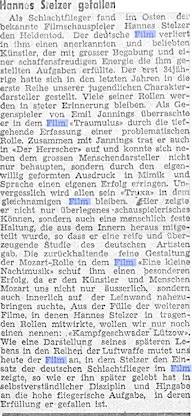 the east. The German film loses in him a recognized and popular artist, who fulfilled the task it created with great talent and a creative energy. The only 34 year old had placed himself in the front row of our youthful character actors in recent years.
the east. The German film loses in him a recognized and popular artist, who fulfilled the task it created with great talent and a creative energy. The only 34 year old had placed himself in the front row of our youthful character actors in recent years.
Many of his roles will be remembered forever. As an opponent of Emil Jannings, he surprised in the film “Traumulus” by the profound understanding of a problematic role. Together with Jannings he also appeared in “Der Herrscher” and was not only able to assert himself next to the great actor, but also to achieve his own success through the idiosyncratic expression in facial expressions and language. His «Truxa» in the film of the same name will remain unforgettable for everyone. Here he showed not only superior acting skills, but also a solid human attitude, which was communicated from within, so that he gave a mature and convincing study of the German artist. The restrained fine design of the Mozart role in the film "A Little Night Music" created him a particular success, as he tried to bring the artist and the person Mozart to us not only outwardly, but also inwardly on the screen.
Of the plethora of other films in which Hannes Stelzer took part in key roles, we want to name just one more:. "Lützow Combat Squadron.” Today, the film seems to us like a portrayal of his later life in the ranks of the Luftwaffe, in which Stelzer showed the use of German attack aircraft in the film, as he later lived it with self-evident discipline and dedication to the high flying task in whose fulfillment he has fallen. ‘.
[ N.B. The Obituary writer's memory was faulty - Stelzer did not appear in Kampfgeschwader Lützow, but rather in Karl Ritter's Stukas !! ]
Erroneous information about Stelzer in other publications:
The prestigious CineGraph Lexikon, one of the most respected reference works on German film, mixes up Stelzer's two marriages, stating that he married Bard first, then divorced her for a younger bride and therefore Bard committed suicide from losing him. This is completey false. He married Bard as his second wife, both of his wives were in fact ten years older than he was, and as far as Bard's fate goes, read below. Such "facts" are repeated again and again by newer historians who are too lazy to research the facts before accepting such nonsense -- a sorry fact!
Bard did not marry Stelzer until July, 1941, a year after they worked on Ritter's Über alles in der Welt together, although this marriage (outside of the erroneous CineGraph entry) is commonly dated as having taken place in 1940. The actual marriage date was confirmed when Karl Ritter's unpublished diaries were cited in William Gillespie's 2nd edition Karl Ritter – His Life and 'Zeitfilms' Under National Socialism (p. 127) as Ritter and his wife Erika attended the Stelzer–Bard marriage and Ritter acted as witness to the ceremony.

Stelzer & Bard's marriage notice in Karl Ritter's private diary, in which Ritter described the trip to the wedding ceremony in Caputh with his wife, and his making a speech to the assembled families, and acting as Witness to the ceremony in July 1941.
As mentioned above, Stelzr's death has been reported in film histories as having taken place in Hungary (wrong) and the cause of his death also variously reported as from being shot down by a Soviet fighter, from hitting high-power electrical lines above the village he was flying over, or due to a snowstorm. We researched this and have a copy of the Stelzer file from the Reichskulturkammer, dated 27 January 1945, a month after his death. It states categorically:
“an Oberfeldwebelin Stelzer’s fighter squadron reported today that Stelzer, upon returning from a successful enemy sortie, for which he has been awarded an Iron Cross 1st Class, flew into a high voltage line in a snowstorm, crashed and found a hero’s deat."
The Ritter book also has published for the first time ever, two incredibly moving and heartfelt love letters written by Stelzer in the immediate months preceding his death, to a girlfriend he was dating after the death of Maria Bard, obtained from that girlfriend's daughter in the USA. The second letter was penned fifteen days before his fatal air crash. The 2nd edition Ritter book has a Chapter 6 devoted to Stelzer and is the most comprehensive and accurate research on this actor published. No knowledge of these letters was known by film historians until they were revealed in the Ritter book's 2nd edition.
You can read Chapter 6 from our 2nd expanded edition of the Karl Ritter book here. The Chapter 6 PDF is © 2014 by William A. Gillespie, All Rights Reserved. Reproduction Prohibited. Why not order the book? It is still in print but with less than 80 copies left.
German Films Dot Net has acquired thirty original photographs which many years earlier had come from Stelzer's first wife's estate, with four of the eight photos shown here never having been published previously. On the top row, across, are three film stills from (1) Ritter's Stukas and (2 and 3) from the film Truxa. The photo of Stelzer in a WWI uniform is from the Karl Ritter film, Unternehmen Michael. The remaining photos were unpublished until now. The next photo of him in an overcoat may be a private photo or one from a stage play (tbc). The next photo shows him as a schoolboy, with his Rucksack on his back, and his 'Zuckertüte' -- the traditional confectionary cone marking a schoolboy's first day of school (circa 1917). As a young man Stelzer was a keen football player and he posed with his old teammates in one photo shown below (he is sitting on the ground, smiling, as his teammates crowd around him.) As his career took off, he bought a brand new 2 litre BMW and that photo shows him taking his father on a drive in 1936. The ninth photo below was taken on 20 August 1942, in Paris, during a pause in the film shooting of Besatzung Dora, by the Luftwafffe Propaganda Kompanie #3 photographer Röder, showing Ritter and some of his cast members, including Stelzer, enjoying a swim together in the Versailles Park. This photo is labeled "Nur für den Dienstgebrauch!" ("For internal use only!") and has never been published until now. The last photo, in colour, shows the house in Caputh, 6km from Potsdam, where Stelzer lived in the early 1940"s, including the year in which he worked on Besatzung Dora. He often stayed for dinner at the Ritter's after a day of work at Ufa Babelsberg, then borrowed Karl Ritter's bicycle (or infrequently, the Ritter's auto) and rode to Caputh and brought the bike or car back the next morning.
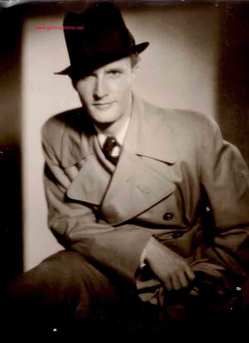


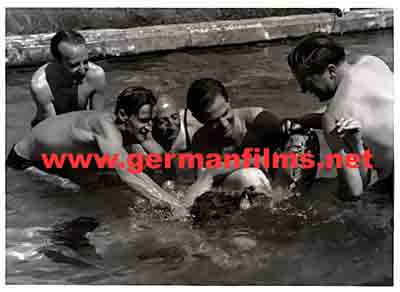

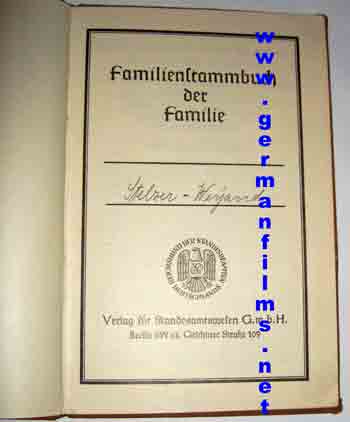
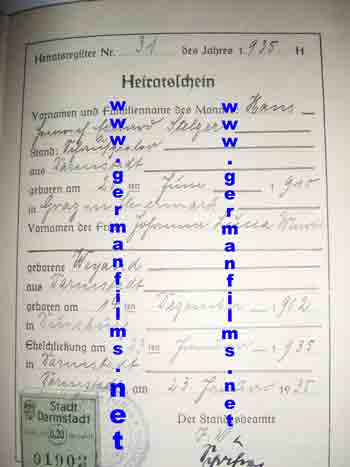
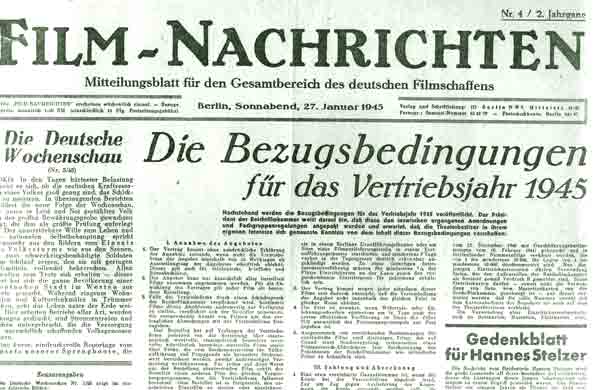
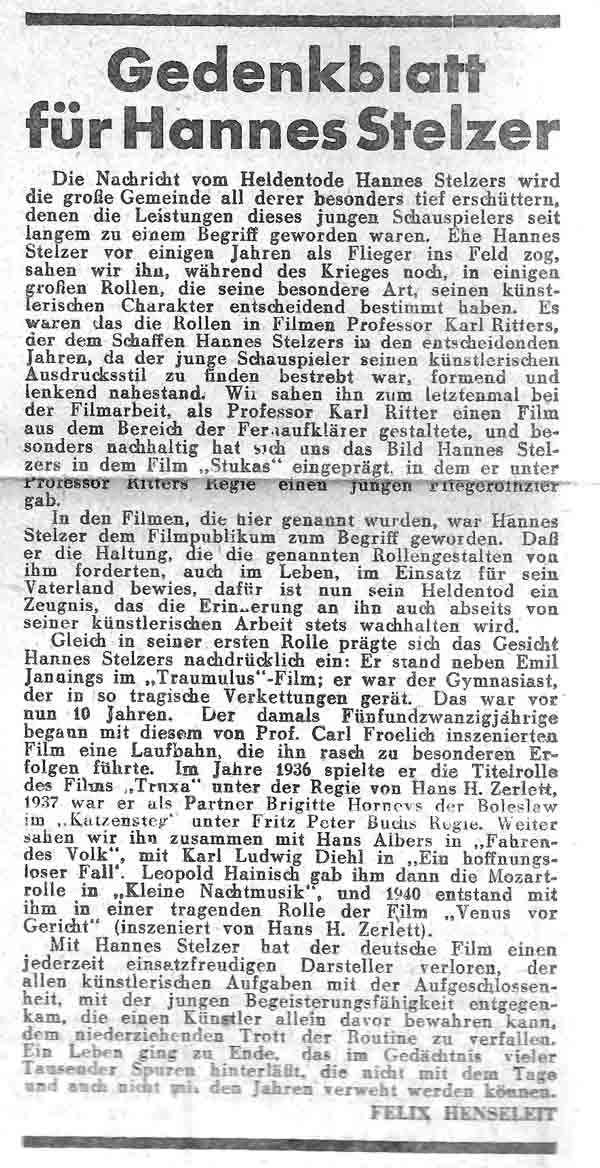
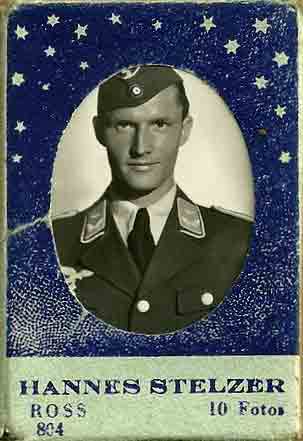
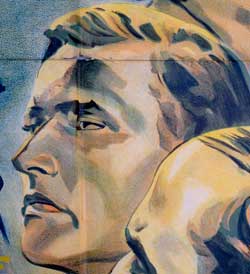
Hannes Stelzer, as depicted on the Jacques Feyder film poster for Fahrendes Volk (1937)

